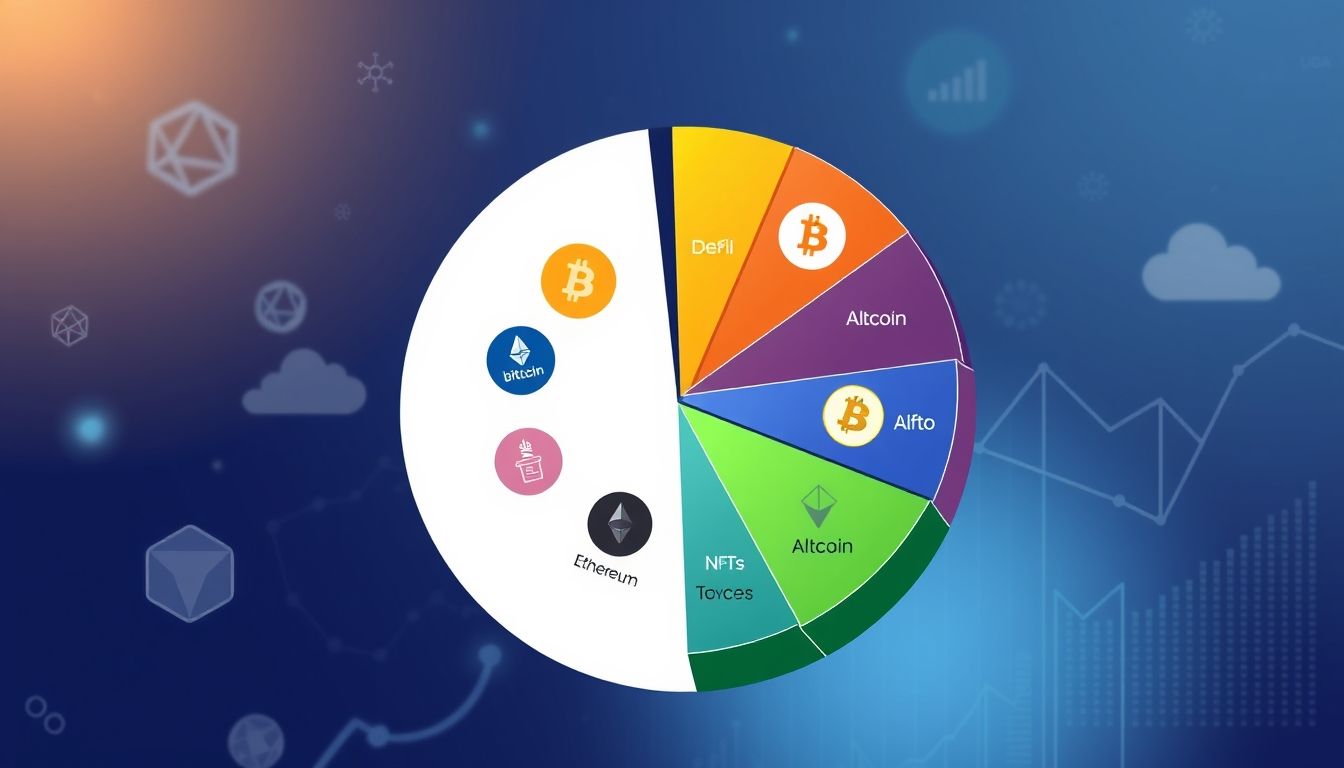Introduction to the World of Cryptocurrency Staking and Mining
In the rapidly evolving world of cryptocurrencies, staking and mining stand out as two primary methods for creating new coins and validating transactions on the blockchain. These processes, although different, play a crucial role in maintaining the security and decentralization of digital networks. Whether you're a curious beginner or a seasoned investor, understanding staking and mining is an essential step towards fully harnessing the potential of cryptocurrencies.
What is Staking?
Staking is the process of holding cryptocurrency in a wallet to support the operations of a blockchain network. Simply put, you "freeze" a portion of your cryptocurrency holdings to help verify transactions and create new blocks. In return, the network rewards you with additional cryptocurrency, much like earning interest on your savings in a bank.
- Proof of Stake (PoS) Mechanism: This is the most common mechanism used in staking. It relies on selecting validators based on the amount of cryptocurrency they own and are willing to "freeze."
- Advantages:
- Accessibility: Anyone with a certain amount of cryptocurrency can participate in staking.
- Energy Efficiency: Staking consumes significantly less energy compared to mining.
- Passive Income: It provides an opportunity to earn additional cryptocurrency simply by holding it.
- Disadvantages:
- Lock-up Period: You may need to freeze your coins for a specific period, meaning you cannot access them.
- Hacking Risks: Although rare, there is a risk of your wallet being hacked and losing your cryptocurrency.
What is Mining?
Mining is the process of validating transactions and adding them to the blockchain by solving complex mathematical problems. Mining requires powerful computers that consume large amounts of electricity. Miners are rewarded with new cryptocurrency for their efforts.
- Proof of Work (PoW) Mechanism: This is the original mechanism used in Bitcoin mining. It relies on miners competing to solve complex mathematical problems, and the winner gets the right to add the next block to the blockchain.
- Advantages:
- Security: Proof of Work networks are among the most secure.
- Decentralization: In theory, anyone can participate in mining.
- Disadvantages:
- Energy Consumption: Mining consumes vast amounts of electricity, making it expensive and environmentally unfriendly.
- High Entry Costs: Specialized mining hardware requires a significant investment.
- Centralization: A few large companies control a significant portion of the mining power.
Chapter 1: Understanding Staking Mechanisms in Detail
Staking is a complex process that goes beyond simply holding cryptocurrency. It involves understanding different Proof of Stake mechanisms, selecting validators, and how rewards are distributed. This chapter delves deep into these details.
Types of Proof of Stake Mechanisms
There are several types of Proof of Stake mechanisms, each with its advantages and disadvantages. Some common types include:
- Delegated Proof of Stake (DPoS): Allows cryptocurrency holders to vote for delegates who validate transactions.
- Liquid Proof of Stake (LPoS): Allows cryptocurrency holders to participate in staking without having to freeze their coins.
- Weighted Proof of Stake (WPoS): Relies on factors other than the amount of cryptocurrency, such as the duration of holding.
Selecting Validators
The selection of validators depends on several factors, including the amount of cryptocurrency they own, their reputation, and their past performance. It is important to choose reliable validators to ensure the integrity of the network and receive regular rewards.
Reward Distribution
Rewards are distributed to validators and cryptocurrency holders who have staked. The percentage of rewards depends on several factors, including the amount of cryptocurrency that has been frozen, the duration of the freeze, and the network itself.
Chapter 2: Effective Mining Strategies
Mining is not just about buying powerful computers and running them. It requires a thoughtful strategy to ensure profitability. This chapter explores best practices for effective mining strategies.
Choosing the Right Hardware
Choosing the right hardware depends on several factors, including the cryptocurrency being mined, the available budget, and the cost of electricity. It is important to choose hardware that is highly energy-efficient and capable of solving mathematical problems quickly.
Joining Mining Pools
Mining pools are groups of miners who work together to increase their chances of getting rewards. By joining a mining pool, you can get a share of the rewards even if you don't have very powerful mining hardware.
Managing Electricity Costs
Electricity costs are one of the most important factors affecting mining profitability. It is important to find locations with low electricity costs and use energy-efficient hardware.
Chapter 3: The Best Cryptocurrencies for Staking and Mining
Not all cryptocurrencies are suitable for staking and mining. This chapter reviews some of the best cryptocurrencies that offer profitable opportunities in this area.
The Best Cryptocurrencies for Staking
- Ethereum (ETH): After transitioning to Proof of Stake, Ethereum has become one of the best cryptocurrencies for staking.
- Cardano (ADA): Cardano is known for its Proof of Stake mechanism called Ouroboros.
- Polkadot (DOT): Polkadot offers good staking opportunities with attractive rewards.
The Best Cryptocurrencies for Mining
- Bitcoin (BTC): Although Bitcoin mining is difficult, it is still the most profitable for some miners.
- Ethereum Classic (ETC): Ethereum Classic is a good option for miners looking for an alternative to Ethereum.
- Ravencoin (RVN): Ravencoin is known for being resistant to ASIC devices, making it accessible to individual miners.
Chapter 4: Risks and Challenges in Staking and Mining
Staking and mining are not without risks. This chapter highlights some of the risks and challenges you should be aware of.
Staking Risks
- Lock-up Period: You may need to freeze your coins for a specific period, meaning you cannot access them.
- Hacking Risks: Although rare, there is a risk of your wallet being hacked and losing your cryptocurrency.
- Price Volatility: Fluctuations in cryptocurrency prices can affect the value of staking rewards.
Mining Challenges
- High Electricity Costs: High electricity costs can make mining unprofitable.
- Mining Difficulty: Mining difficulty is constantly increasing, requiring more powerful hardware.
- Price Volatility: Fluctuations in cryptocurrency prices can affect mining profitability.
Chapter 5: Taxes and Regulations Related to Staking and Mining
Staking and mining rewards are subject to taxes in many countries. This chapter provides an overview of taxes and regulations related to these activities.
Taxes on Staking Rewards
Staking rewards are generally considered taxable income. You must report these rewards on your tax returns.
Taxes on Mining Rewards
Mining rewards are also considered taxable income. In addition, you may be able to deduct mining costs, such as electricity and hardware costs.
Regulations Related to Cryptocurrencies
Regulations related to cryptocurrencies vary from country to country. It is important to stay up-to-date with local regulations to ensure compliance.
Chapter 6: The Future of Staking and Mining
Staking and mining are constantly evolving. This chapter explores some future trends in this area.
The Shift to Proof of Stake
Many cryptocurrencies are moving towards Proof of Stake mechanisms due to their energy efficiency. This trend is expected to continue in the future.
Development of More Efficient Mining Hardware
More efficient mining hardware is constantly being developed to reduce energy consumption and increase profitability.
The Emergence of Decentralized Finance (DeFi)
The emergence of decentralized finance is creating new opportunities for staking and mining, as users can earn rewards by providing liquidity to decentralized platforms.
Chapter 7: Tips for Beginners in Staking and Mining
If you are new to the world of staking and mining, here are some tips to help you get started.
Start Small
Don't invest more than you can afford to lose. Start with small amounts of cryptocurrency and learn the basics before investing heavily.
Do Your Research
Before investing in any cryptocurrency, research the project, its technical team, and its community thoroughly.
Use Secure Wallets
Use secure wallets to store your cryptocurrency. Consider using Hardware Wallets for added security.
Chapter 8: Practical Examples from the Arab and Global Markets
Let's take a look at some practical examples from the Arab and global markets on how to profit from staking and mining.
Staking Success Stories
There are many individuals and companies that have made significant profits by staking cryptocurrencies. For example, Cardano users can earn annual rewards of up to 5% by staking their ADA coins.
Mining Success Stories
There are also many companies that run large mining farms and make significant profits by mining Bitcoin and other cryptocurrencies.
Chapter 9: Useful Tools and Resources for Staking and Mining
There are many tools and resources available to help you with staking and mining.
Cryptocurrency Wallets
Cryptocurrency wallets are software or devices that allow you to store and manage your cryptocurrency. Some popular wallets include Ledger, Trezor, and MetaMask.
Reward Tracking Websites
Reward tracking websites allow you to track the performance of your staking and mining rewards. Some popular websites include Staking Rewards and WhatToMine.
Cryptocurrency Forums and Communities
Cryptocurrency forums and communities provide an opportunity to connect with other miners and validators and exchange knowledge and experiences.
Chapter 10: Conclusion and Recommendations
Staking and mining are profitable ways to earn cryptocurrency. However, it is important to understand the risks and challenges associated with these activities before investing. By doing thorough research and using the right tools and resources, you can increase your chances of success.
Recommendations:
- Start small and learn the basics.
- Research cryptocurrencies thoroughly before investing.
- Use secure wallets to protect your cryptocurrency.
- Stay up-to-date with local regulations.




